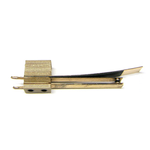Haggis Pinball
Registered
Hi everyone. A good mate and I recently decided to try and make a pinball machine from scratch (yes, beers may have been involved).
We also decided to create a vlog and document the process so anyone else that was interested, could follow along (and help keep us accountable)
Episode 1 is now live, so please have a watch if you think this may be your thing.
You can also find us on YouTube here: Haggis Pinball, subscribe to get the latest updates and/or hit us up on Facebook: Haggis Pinball
Cheers,
Damian
We also decided to create a vlog and document the process so anyone else that was interested, could follow along (and help keep us accountable)
Episode 1 is now live, so please have a watch if you think this may be your thing.
You can also find us on YouTube here: Haggis Pinball, subscribe to get the latest updates and/or hit us up on Facebook: Haggis Pinball
Cheers,
Damian



